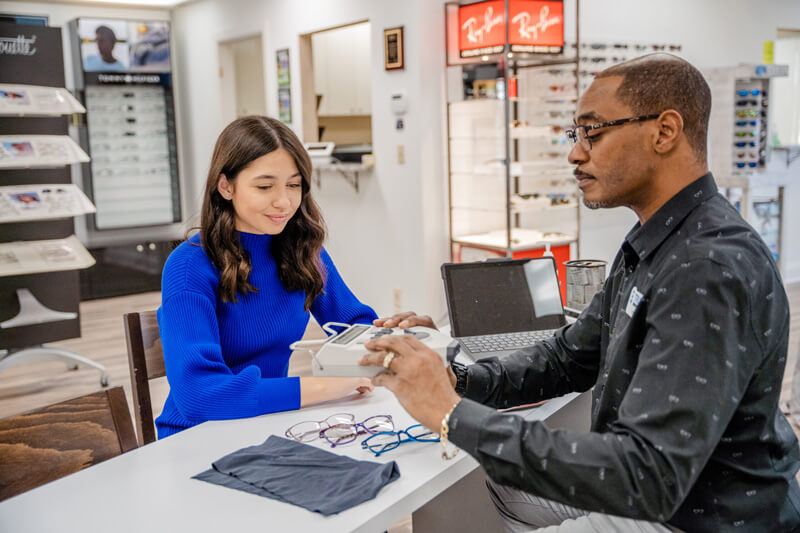Astigmatism

Astigmatism Treatment at True Eye Experts
If all of our patients’ refractive disorders were limited to nearsightedness and farsightedness, prescribing accurate vision correction would be a relatively straightforward process. For many people, however, an additional refractive error may in play. This error, known as astigmatism, is an irregularity of the cornea or lens that interferes with the refraction of incoming light, often complicating an existing case of nearsightedness or farsightedness in the process. Fortunately, our dedicated team at True Eye Experts can correct these aberrations to a high degree of precision.


What Causes Astigmatism?
One of the trickiest aspects of astigmatism is how many different forms it can take. There are two primary categories of the disorder, an irregularly-shaped cornea (he most common category) and an irregularly-shaped lens (known as lenticular astigmatism). The irregularities themselves can be quite subtle and complex as well. Football-shaped bulges and other deviations from the cornea’s spherical norm may occur along any of the eye’s meridians, or angles (as one might consider the hour hands of clock dividing the clock face into angles). You may have one nearsighted meridian and one farsighted meridian in the same eye, and the two eyes can have completely different astigmatic patterns. Add this on top of an elongated or foreshortened eyeball, and you can end up with a very interesting refractive mix indeed!

Astigmatism Diagnosis and Treatment
Diagnosing and treating astigmatism effectively requires the right skill, tools, and experience —all of which our doctors at True Eye Experts can provide. We use a variety of evaluation methods that can help us understand the exact nature of your condition, from standard vision testing using a phoropter to retinoscopy (an examination of how light is entering the eye) and detailed corneal measurements using a keratometer. Great care is taken to note not only your “sphere” measurement (always a factor in correcting nearsightedness or farsightedness) and your “cylinder” measurement. The sphere records the degree of your less-distorted meridian, while the cylinder records the degree of your more-distorted meridian. These two measurements are added up to get your total vision correction prescription.

Available Eye Correction Options
Once our eye doctor has obtained your prescription, it’s time to review your available correction options:
Eyeglasses
Eyeglasses have always been a reliable means of correcting astigmatism, but modern contact lenses can do quite a good job of it as well. Options include soft toric lenses (which place the different powers of vision correction in different parts of the lens) and rigid gas permeable lenses that essentially take over the job of refraction from the abnormal cornea.
LASIK surgery
LASIK surgery may also be an option in some cases, although milder astigmatism is easier to correct in this manner without the need for later fine-tuning. We can perform all the necessary pre-operative and post-operative evaluations and care for this option.

Learn More About Astigmatism Treatment at True Eye Experts
For more information about astigmatism treatment, visit one of our locations or schedule an appointment online.
